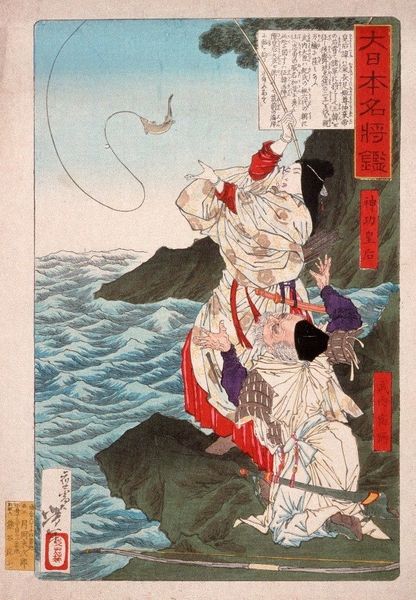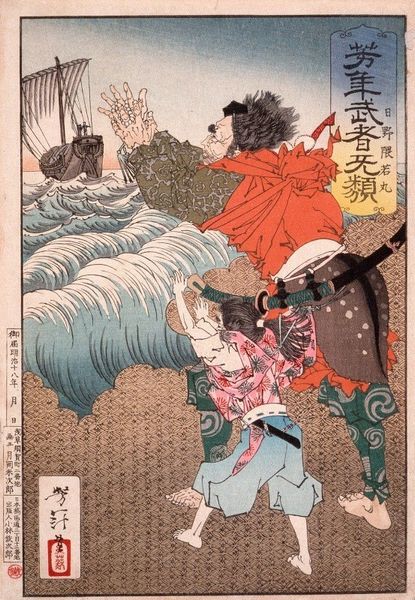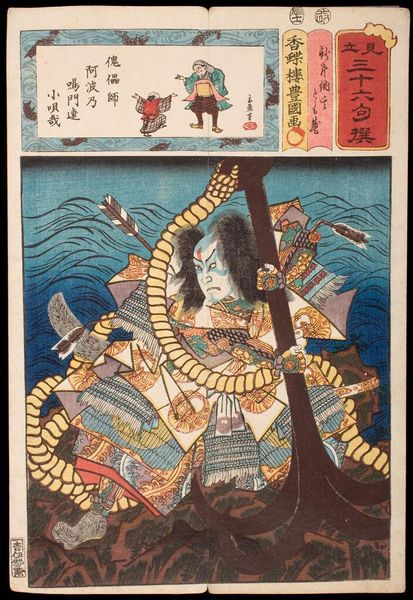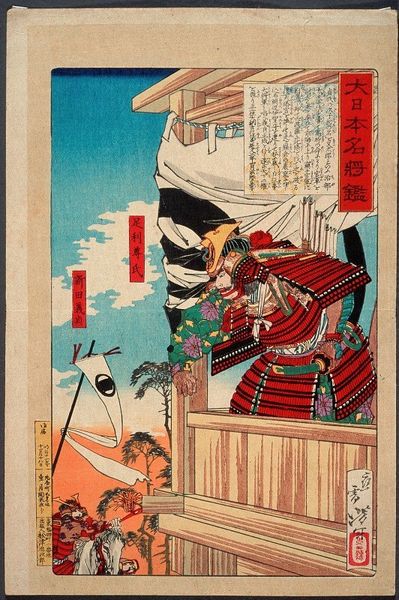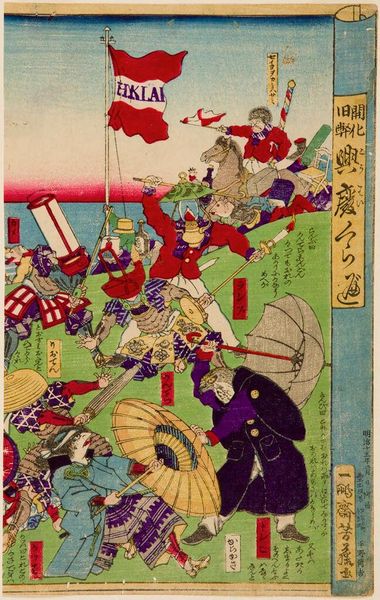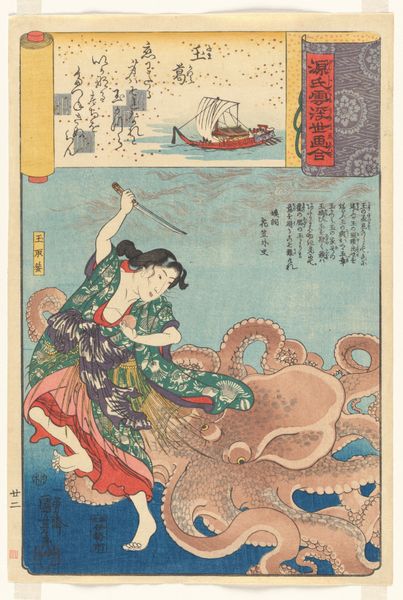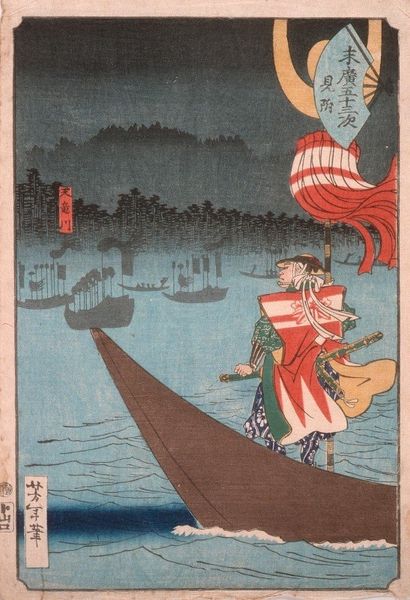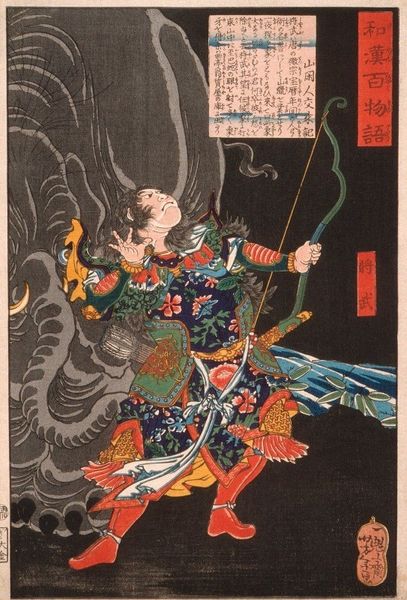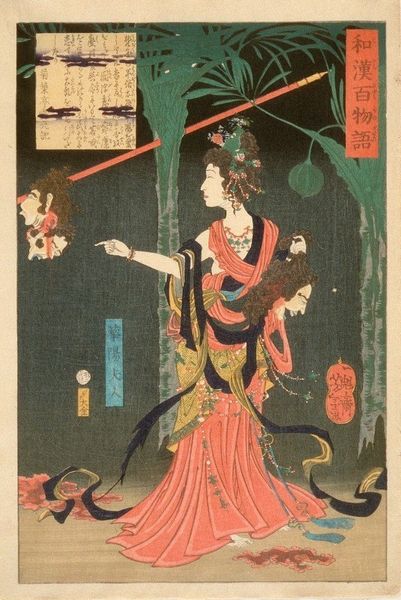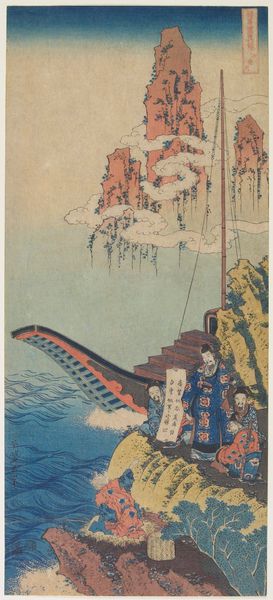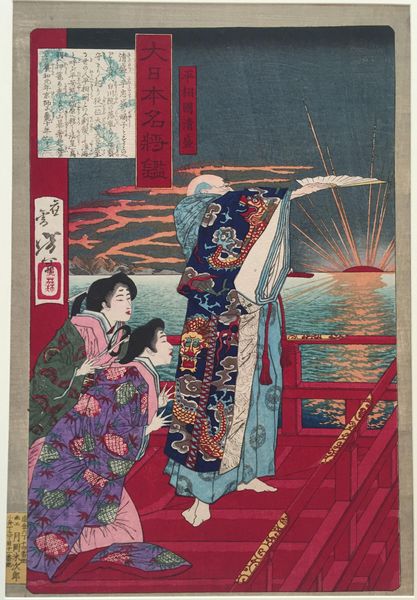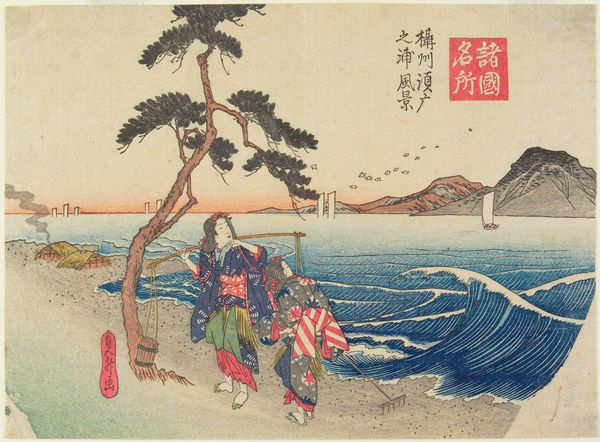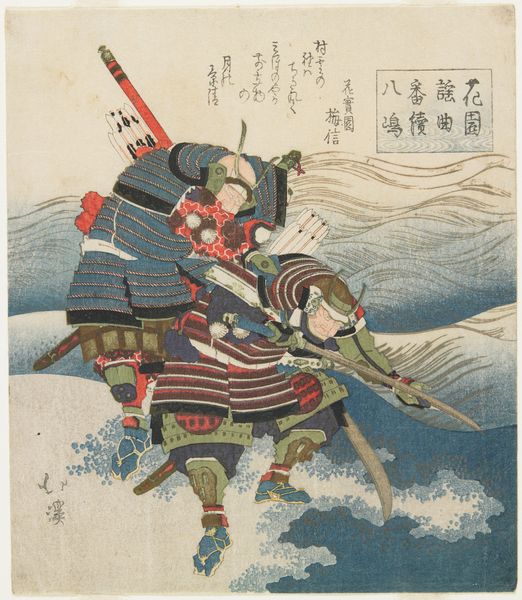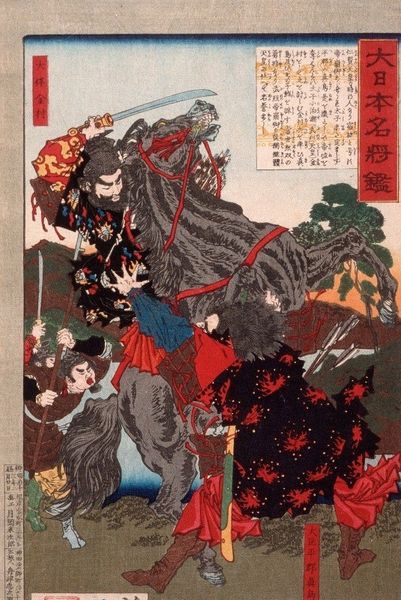
Copyright: Public Domain: Artvee
Curator: Yoshitoshi's woodblock print, made in 1878, depicts a scene with "Chinzei Hachiro Tametomo and Oniyashi on a Beach." I'm struck by how this ukiyo-e style utilizes such vibrant color against the backdrop of a tumultuous scene. Editor: That's it immediately. I get a sense of unease. Look at that defiant figure in a bold floral kimono set against the harsh coastline. The stark contrast between his seeming composure and the visible struggle adds a layer of tension, wouldn't you say? Curator: Indeed. We need to see this through a critical lens, thinking about Yoshitoshi's context within Meiji-era Japan. He uses traditional modes of representation to convey, and arguably critique, historical narratives. What purpose does myth serve when modernization efforts seem to erase the past? Editor: Right, who controls the narrative and to what ends? Tametomo, aiming his bow, becomes a figure through which to interpret societal transformations; consider, for example, the way Japanese masculinity gets reframed as Japan is forced open by external forces. That bow isn't just for show. Curator: You bring up an important point. Consider that Oniyashi seems subjugated or subservient to Tametomo, kneeling and holding the arrow steady. Yoshitoshi utilizes such historical relationships to interrogate societal stratification. The tale itself stems from the Hogen Rebellion, a crucial moment of shifting political power in the late Heian period. Editor: And we should question if the act of its creation then attempts to preserve an ideal of Japanese strength against foreign incursion. Look how those approaching ships are depicted in the background. Does this print promote ideals of unwavering resolve? Curator: Undoubtedly. But through visual rhetoric. Take, for example, the detail of the turbulent wave about to crash. He implies tension while seemingly freezing that moment in time. Yoshitoshi expertly frames our reading of the print and narrative to focus not on the imminent storm, but rather on the central protagonists' resolve. Editor: So Yoshitoshi doesn't present history simply as a depiction of the past but also engages with the politics of representation. In this way, the scene can act as an attempt to negotiate national identity and resistance amid growing anxieties about Japan's place in the modern world. It’s both visually stunning and dense in historical context. Curator: I completely agree. Thank you for bringing this dialogue to light. Yoshitoshi provides us with not only the landscape as backdrop but with cultural currents. Editor: Yes, it allows for crucial consideration around social dynamics. I see him challenging us to confront these power dynamics still at play today.
Comments
No comments
Be the first to comment and join the conversation on the ultimate creative platform.
